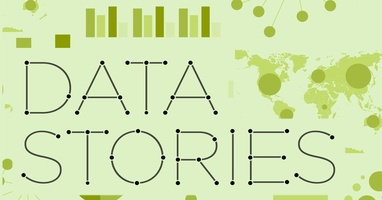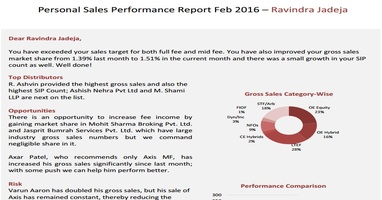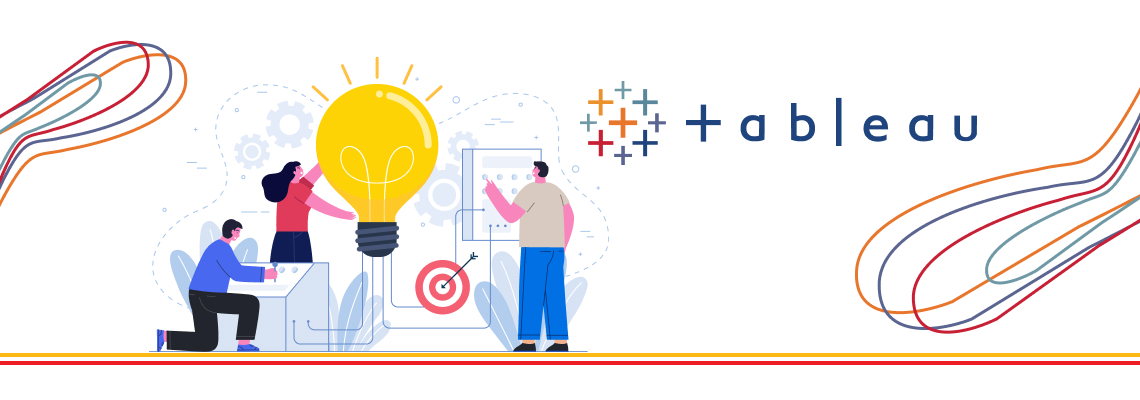
Imagine if data could be transformed into a vibrant canvas where trends and relationships emerge as hues and intensities. This is precisely what a heatmap does. It's a graphical representation that employs colors to showcase data distribution and variations. As you embark on this journey through our blog, we'll not only unravel the magic behind heatmaps but also equip you with the know-how to create your very own using Tableau, a versatile platform renowned for crafting captivating visualizations. So, get ready to transform raw numbers into captivating visual stories!
Consider a retail store analyzing its sales data over a year – a heatmap can swiftly identify the peak sales periods and the products that generated the most revenue during those times.
Similarly, in biology, heatmaps are invaluable for visualizing gene expression patterns across various samples. Whether it's understanding customer behavior, tracking performance metrics, or analyzing scientific data, heatmaps are an essential ally in the realm of data exploration.
In this blog, we're going to unravel the mechanics of creating these insightful visuals using Tableau, opening doors for you to unravel insights within your own data.
Preparing Data for Heatmaps
Data Requirements:
To set the stage for a successful heatmap, your data should have a combination of categorical and numerical attributes. Categorical data defines different categories or groups, while numerical data provides the quantitative values associated with those categories. This combination allows the heatmap to shine a light on the relationships between these categories and their corresponding values.
Imagine having sales data for different products (categories) over various months (categories again), each with their respective revenue figures (numerical values). This is the kind of data that lays the foundation for an informative heatmap.
Data Cleaning and Formatting:
Similarly, your data needs to be clean and structured to create an accurate and insightful heatmap. Before diving into visualization, it's essential to ensure that your data is consistent, free from errors, and organized in a way that makes sense.
Setting Up Tableau for Heatmap Creation
Creating your heatmap using Drag and Drop approach:
Select Data Source: After opening Tableau, click on "Connect to Data" and choose your prepared dataset.
Drag Dimensions and Measures: Drag a categorical variable to the Columns shelf and a different categorical variable to the Rows shelf. For instance, if you have sales data, you could place "Product Category" on Columns and "Month" on Rows.
Measure Placement: Drop a numerical measure, like "Sales Revenue," onto the Color shelf. The color intensity will now represent the values of this measure.
Instant Heatmap: Voila! Your basic heatmap is ready. The varying color shades will reveal patterns and trends in your data. Tableau's default settings will choose suitable colors.
Customizing the Heatmap:
A bit of personal flair can make your heatmap truly shine. Here's how you can add those special touches:
Color Customization: Click on the Color shelf to modify the color palette. You can choose from gradients, diverging colors, or create a custom scheme that fits your data's context.
Labels and Tooltips: To provide context, you can add labels to your rows and columns. Tooltips, those small information pop-ups, can give extra details about each cell's data point. This enhances your viewer's understanding.
Axis and Titles: Tidying up is essential. Add meaningful titles to your axes and the heatmap itself. This helps your audience quickly grasp what they're seeing. Also, adjust axis labels for readability.
By following these steps, your basic heatmap will evolve into a customized visualization that's not only informative but also visually appealing.
Steps to enhance your Heatmap
Adding Context with Filters:
A truly captivating visualization doesn't just show data; it tells a story. Filters provide the plot twists that make your heatmap narrative compelling. Here's how you can add layers of context:
Filter Application: Select relevant dimensions, such as "Region" or "Product Category," and create filters. These filters act as magnifying glasses, allowing you to zoom in on specific data subsets.
Interactive Exploration: Make your heatmap interactive by dragging filters onto your dashboard. This empowers your audience to dynamically control what they see, making the exploration process engaging and insightful.
Using Parameters for Interactivity
Imagine having the power to change a painting's color palette with a flick of your wrist. Parameters in Tableau offer similar enchantment to your heatmap:
Introduction to Parameters: Parameters act as dynamic variables that let you adjust visual aspects, like color schemes or thresholds, on the fly.
Steps to create Parameters on Tableau:
1. Open Your Worksheet:
- Start by opening the worksheet where you want to create and use the parameter.
2. Go to Data Pane:
- On the left-hand side of the screen, locate the "Data" pane. This pane shows your data sources, fields, and other related items.
3. Right-Click and Create Parameter:
- Right-click anywhere within the "Data" pane, and from the context menu, select "Create Parameter."
4. Define Parameter Details:
A dialog box will appear, allowing you to define the parameter's details:
- Name: Give your parameter a meaningful name.
- Data Type: Choose the appropriate data type for your parameter. This could be string, integer, float, etc.
- Allowable Values: Select how you want to set allowable values for your parameter. You can choose from a list, range, or all values.
- Current Value: Set a default value for the parameter.
- Set Parameter Values: Depending on your chosen allowable values, set the values accordingly. For example, if you're using a list, input the values you want to include.
5. Show Parameter Control:
- Once you've defined your parameter, you'll want to show it on your worksheet for interaction. To do this, right-click on the parameter's name in the "Data" pane and select "Show Parameter Control." This will add a control element to your worksheet.
6. Use Parameter in Visualizations:
With the parameter control visible, you can now use it in your visualizations. For instance, if you're using the parameter to control the color scheme of a heatmap, you can use the parameter as a variable in your color calculations.
7. Test and Refine:
Interact with the parameter control to see how it affects your visualization. You can adjust the parameter's value and observe how it alters the display. You might need to refine the parameter's settings based on the desired interactivity and outcomes.
Advanced Heatmap Techniques:
Dual-Axis Heatmaps
Consider using dual-axis heatmaps when you have two measures that might have different scales but are still related. For instance, you might want to visualize both revenue and profit margins for different product categories.
Steps to create a Dual-Axis Heatmap in Tableau
1. Open Your Worksheet:
- Begin by opening the worksheet where you want to create the dual-axis heatmap.
2. Drag and Drop Dimensions and Measures:
- Drag a categorical dimension to the Columns shelf (for X-axis).
- Drag another categorical dimension to the Rows shelf (for Y-axis).
- Drag your first measure (let's call it "Measure A") to the Marks card, typically onto the "Color" shelf. This measure will determine the color intensity of the heatmap.
3. Create the Second Measure:
- Duplicate "Measure A" by right-clicking on it and selecting "Duplicate."
- Drag the duplicated measure (now called "Measure A (2)") to the same Marks card but on a different shelf, such as "Size."
4. Adjust Marks Card:
- On the Marks card, click on "Size" shelf and choose "Fixed" for sizing.
- Adjust the size of the marks to your preference; this will determine the size of the heatmap cells.
5. Synchronize Axes:
- In the Columns shelf, click on the dropdown arrow (small triangle) next to the dimension, and select "Dual-Axis."
- This will create two sets of axes.
6. Adjust the Second Axis:
- On the second axis (right side), right-click on "Measure A (2)" and choose "Dual-Axis" again to synchronize the scales.
- Then, on the second axis, click on the "Size" shelf and choose "Fixed" for sizing as well.
7. Adjust Sizing and Opacity:
- On the Size shelf of the first measure, adjust the size of the marks to your preference.
- You can also adjust the opacity of the marks to ensure visibility of both layers.
8. Customize Colors:
- Customize the color schemes for both measures by clicking on the Color shelf of each measure.
- Ensure that the colors you choose are distinct and convey the necessary information.
10. Label and Title:
- Add axis labels and a title to help viewers understand the content of your dual-axis heatmap.
11. Refine and Format:
- Play with the layout, formatting, and labels to ensure clarity and aesthetics.
12. Test and Interact:
- Interact with the dual-axis heatmap by applying filters or drilling down into specific data points to extract insights.
Density Heatmaps:
Imagine using a magnifying glass to explore tiny details within a painting. Density heatmaps do something similar for data, revealing distribution patterns that might otherwise go unnoticed:
Steps to create a Density Heatmap on Tableau:
1. Open Your Worksheet:
- Start by opening the worksheet where you want to create the density heatmap.
2. Drag and Drop Dimensions and Measures:
- Drag a geographical dimension (like Latitude and Longitude) or a time-based dimension to the Columns and Rows shelves.
- Drag your measure, which represents the data density, to the Marks card. It's often a count of records or a measure that signifies data concentration.
3. Choose the "Density" Mark Type:
- On the Marks card, change the mark type from the default to "Density."
4. Adjust the Size and Opacity:
- On the Size shelf of the density marks, adjust the size of the marks to control the density area size. Larger marks indicate higher data density.
- You can also adjust the opacity of the density marks. Higher opacity makes dense areas more visible.
5. Customize Colors:
- Customize the color scheme of the density heatmap by clicking on the Color shelf.
- Choose colors that effectively represent the density levels, with darker colors for higher density areas.
6. Add Labels and Tooltips:
- Consider adding labels to the axes to provide context for viewers. You can also customize tooltips to display additional information when users hover over density areas.
7. Refine and Adjust:
- Fine-tune the sizing, opacity, and color choices to ensure that the density heatmap effectively highlights data distribution patterns.
8. Interactivity:
- If desired, you can add filters, parameters, or actions to enhance interactivity. For example, users could select a specific region or time period to see how density changes.
10. Testing and Review:
- Interact with the density heatmap to ensure that it accurately represents data distribution and provides meaningful insights.
11. Save and Share:
- Once you're satisfied with the density heatmap, save your worksheet and consider sharing it as part of a larger dashboard or presentation.
As you've learned, a heatmap isn't just a canvas of colors; it's a window into data's hidden stories. But what if we told you there's a way to take your visualization to an even higher level? Allow us to introduce the Phrazor Extension for Tableau. With Phrazor, your heatmaps and dashboards transform into insightful narratives, delivering a clear and coherent storyline to your business users.
Phrazor generates narrative insights that summarize the visualization's essence, making it easy for anyone to understand the underlying insights. Plus, the ability to drill down into these narratives uncovers the potential causes behind trends and anomalies. This fusion of data visualization and narrative intelligence empowers you to not just show data, but to tell its story – a story that resonates and drives informed decision-making.
About Phrazor
Phrazor empowers business users to effortlessly access their data and derive insights in language via no-code querying
You might also find these interesting
Recommended Reads

Phrazor Visual Product Update: October 2023
Our latest Phrazor Visual update brings improved language quality, key takeaways, and actionable insights.
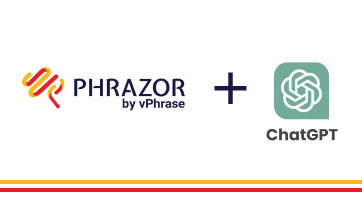
Why Phrazor and ChatGPT are a match made in Heaven
Learn how Phrazor SDK leverages Generative AI to create textual summaries from your data directly with python.

What is Power BI DAX - A Complete Guide
Power BI DAX formulas have a well-defined structure that combines functions, operators, and values to perform data manipulations.
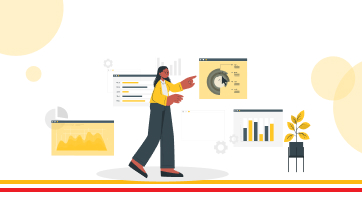
How to Create a Data Model in 6 Simple Steps
Learn the basics of how to create a working data model in 6 simple steps.

Top 7 Tableau tips and tricks for Tableau developers
Supercharge your Tableau reports with our seven expert Tableau tips and tricks! We will share tips on how to optimize performance and create reports for your business stakeholders.
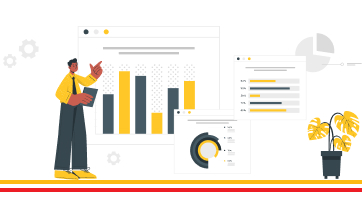
Complete Guide to Master Power Query
What is Power Query? Power Query allows user to transform, load and query your data. Read our complete guide to know more about Power Query.
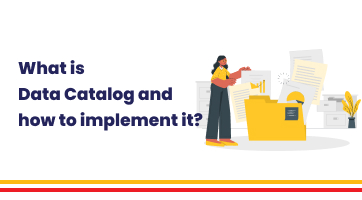
What is Data Catalog and how to implement it
Data Catalog is an organized inventory of an company's data assets, providing a centralized repository that facilitates data discovery, understanding, and management.

Top 7 Power BI tips and tricks for Power BI developers
Supercharge your Power BI reports with our seven expert Power BI tips and tricks! We will share tips on how to optimize performance and create reports for your business stakeholders.
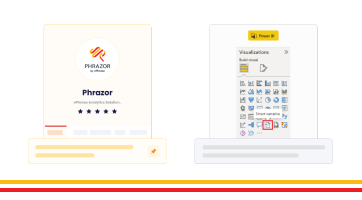
Generate Smart Narratives on Power BI
Learn the smarter and easier way to generate Narrative Insights for your Power BI dashboard using the Phrazor Plugin for Power BI.
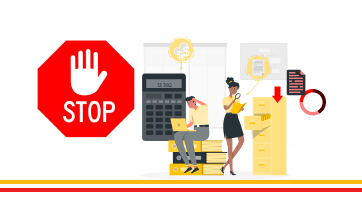
5 Common BI Reporting Mistakes to Avoid
Learn how to avoid the top common BI reporting mistakes and how to leverage your data to the maximum usage.
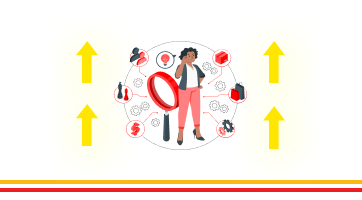
5 Ways to Improve Your Business Intelligence Reporting Process
Learn how to establish a consistent reporting schedule, work on data visualization, automate data collection, identify reporting requirements, and identify KPIs and metrics for each report.
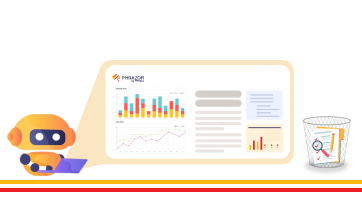
Automate your talent acquisition report with Phrazor
Discover how to enhance your talent acquisition reporting with BI tools like writing automation and NLG. Learn about Phrazor’s capabilities and its integration with Power BI.
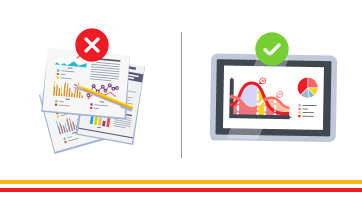
Benefits of Automated Financial Reporting for Enterprises
Learn about the benefits of automated financial reporting and the role of natural language processing (NLP) in its success in this informative blog.
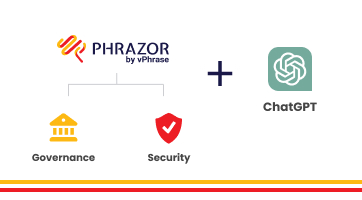
How Phrazor eliminates ChatGPT's data security risks for Enterprises
Learn how Phrazor enhances data security for enterprises by separating sensitive information from ChatGPT's queries. Generate insights with confidence.
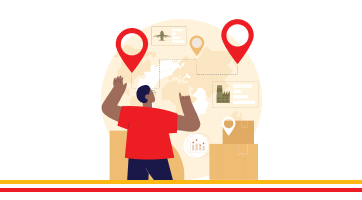
Supply Chain Analytics and BI - Why They Matter to Enterprises
Learn how supply chain analytics and business intelligence (BI) can help organizations optimize their operations, reduce costs, and improve customer service.
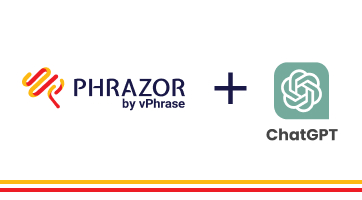
How Phrazor leverages ChatGPT for Enterprise BI
Discover how Phrazor, an enterprise business intelligence platform, harnesses the power of ChatGPT, a large language model, to generate insightful reports and analyses effortlessly. Learn more about the benefits of using Phrazor's AI-powered capabilities for your business.
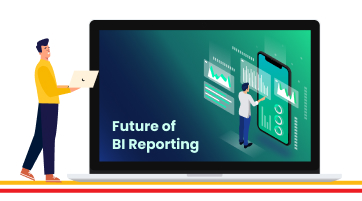
The Future of BI Reporting - Trends and Predictions for 2023
Explore the new trends and predictions for the Business intelligence Industry and How AI is disrupting the BI industry and the traditional methods.
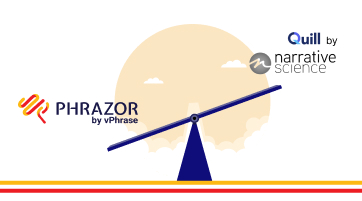
Narrative Science has Shut Down. Here's an Interesting, and Similar, Alternative For It
If you're a Narrative Science customer, you may have recently found yourself in a tough spot. In December 2022, Narrative Science was acquired by Salesforce for Tableau, and their services have now been stopped. So where does that leave you?

Why it Makes Sense for Small Enterprises to Opt for Self-Service BI Early
If we are to learn from the best, it’s evident that data is the fuel to propel your growing organization to greater heights. Google used what is termed ‘people analytics’ to develop training programs designed to cultivate core competencies and behavior similar to what it found in its high-performing managers. Starbucks...
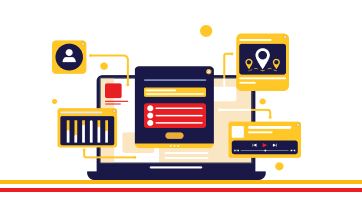
Improving Dashboard Functionality Through Design
A look at the multiple design and customization options Phrazor provides to dashboard creators, to help drive engagement, adoption, and more.

Conducting Advanced Conversational Queries on a BI Tool Effortlessly
Natural Language Querying, or NLQ, is one of the primary methods through which a business user can synergize his vast experience and answers from the company’s data to arrive at the best decisions, without wasting time on either learning or executing anything new.

How Pharma can Optimize Sales Performance Using Business Analytics
The Pharma play is smartening up with automated insights to drive effectiveness in Sales and Marketing efforts.
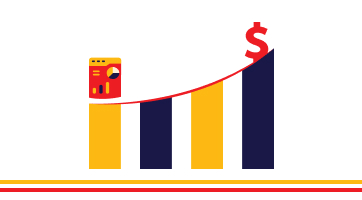
Leveraging Sales Analytics to Gain Competitive Advantage
Learn how Analytics is shining the light on your sales data to stay ahead of the game.
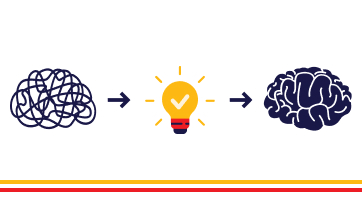
Impact of Good Insights in Business
Why do managers not use data or insights? Can insights be bad? What is a good insight? Read on for answers.

How Marketing Analytics Optimizes Marketing Efforts
Know for sure if your marketing efforts are hitting bullseye or missing the mark.
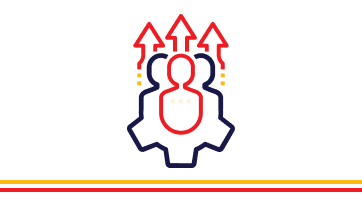
How HR Analytics can find the Right Talent and drive Business Productivity
Gain complete visibility of the human resource lifecycle to drive business value.
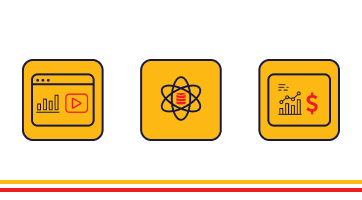
Business Intelligence vs Data Analytics vs Business Analytics
What is the best fit for your business needs? Let’s find out.
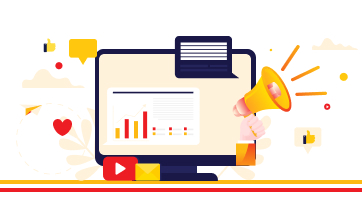
Applications of NLQ in Marketing
NLQ holds the potential to completely revolutionize the way the marketing department works, helping them improve lead generation, measure campaign performance, sift through web analytics, and create effective content.
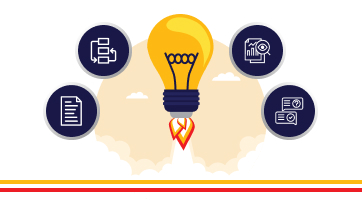
Does Your BI Tool Have These 4 Must-Have Features?
Although BI tools are being widely indoctrinated into a company’s tech arsenal, its usage and adoption still leaves a question mark on the validity of the BI investment made. Some of the common reasons why Business Intelligence tools are not being adopted company-wide are:
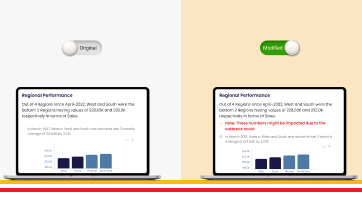
Taking Collaboration To The Next Level With Modified Reports
Phrazor provides a simple solution: create an additional, ‘modified’ report that holds all your comments and edits, without altering the original report whatsoever.
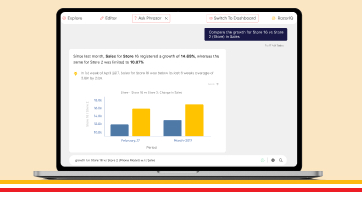
How To Create A Dashboard By Just Chatting - In 4 Steps
Due to the cumbersome process of communicating with tech teams, business users have to wait for weeks or days to get even ad-hoc queries answered. The dependency on data analysts is just far too great. Additionally, most dashboards in use today are of a static nature..
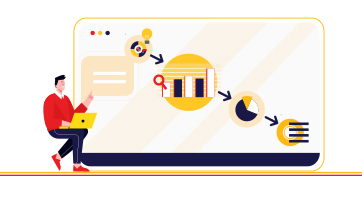
Why Narrative-Based Drill-Down is Superior to Normal Drill-Down
Narrative-based drill-down helps achieve the last-mile in the analytics journey, where the insights derived are able to influence decision-makers into action. Let’s understand how narrative-based drill-down works through a real example...
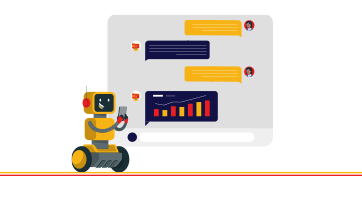
Why Phrazor’s Conversational Analytics Chatbot is a Cut above other Chatbots
The querying capabilities of Ask Phrazor when compared to the other solutions available in the market, those from Tableau and Power BI, for instance, leave clear daylight between Ask Phrazor and the others. Here are 5 features that showcase how Ask Phrazor is a cut above the rest:
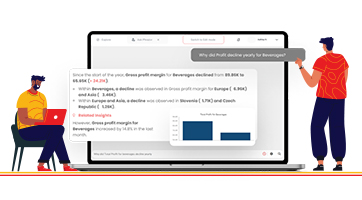
Don’t Ask Your IT Team, Ask Your Data - Dashboard Conversation Interface for Business Users
Conversational analytics on dashboards for business users means they can conduct queries and ad-hoc queries on dashboards in real-time, without the need to revert to tech-based teams and wait for days or weeks for reverts.
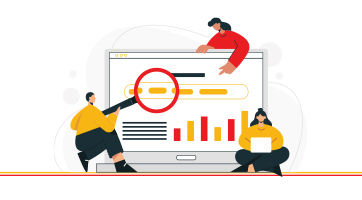
Self-Service BI - The Way Forward For Both Analysts and Business Users
The most important question that business users should be asking when making important decisions is this: does my dashboard enable me to take decisions independently?
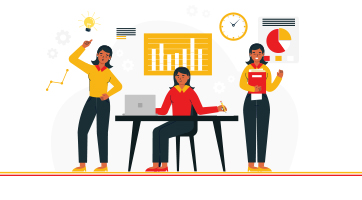
5 Top Management Reporting Expectations And How To Meet Them
Reports created for the top management do not fulfill their purpose of being useful in strategic decision-making. So what are the top management reporting expectations, and how do you meet them? Read on:

How Phrazor Helps Improve Sales for the Pharmaceutical Industry
Each report is embedded with language-based insights that make data easy to interpret. These auto-generated insights not only explain the data visible on the dashboard but also mine the underlying data pool to surface hidden insights that would have gone completely unnoticed otherwise.
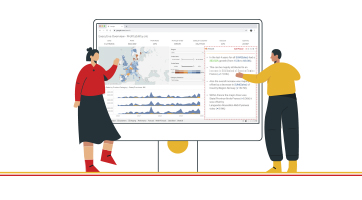
Here’s why you need to add a Language Extension on Tableau
Even though Tableau Dashboards are loaded with exciting features, and new ones constantly added, organizations cannot justify the cost of acquisition of such high-investment BI Tools due to their inability to contribute to ROI. In other words, business owners are not always able to use dashboards to arrive at all-important decisions.
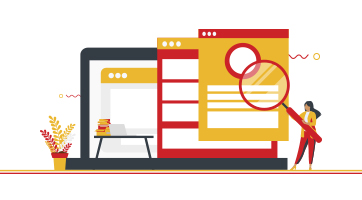
Why should the Financial Services Industry invest in a Self-Service BI Tool
One would conclude that while there is nothing wrong with traditional BI tools, it is the evolution of data in terms of size and complexity and how organizations use it today that necessitates analytics which is beyond the scope of traditional BI tools.
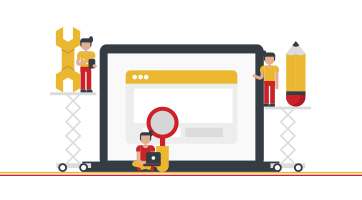
How a Self-Service BI Tool can help the Financial Services industry in Market Intelligence Reporting
Market intelligence reports are to enhance your business intelligence and decision-making. Self-service BI tools can help financial service providers expand their offerings, discover unexplored markets, become more efficient.
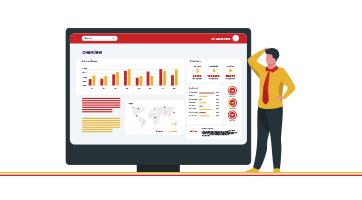
Are your dashboards failing to perform? 10 ways to make your dashboards perform optimally
Dashboards curate comprehensive data analysis and enable users to customize the information they want to be displayed. This article describes the reasons why dashboards seem ineffective and how you can avoid these problems.
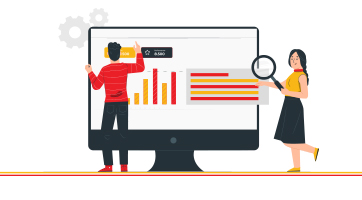
Data Storytelling: Communicate Insights from Business Data Better with Stories
Data-driven storytelling makes data and insights more meaningful. This article describes the need for data storytelling, how it impacts businesses and helps in improving the communication of insights.

Why Augmented BI is a must-have for your business?
Learn how Business Intelligence has evolved into self-service augmented analytics that enables users to derive actionable insights from data in just a few clicks, and how enterprises can benefit from it.
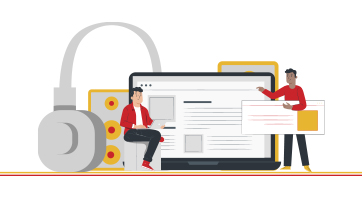
How is Natural Language Generation Enhancing Processes in the Media & Entertainment Sector
Natural Language Generation plays a vital role for media and entertainment companies to create the right customer experience. It improves processes, boosts customer engagement, and gain a competitive advantage.
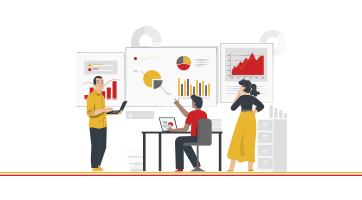
Making Sense of Big Data with Natural Language Generation
Businesses often face challenges in combing and mining the right data and translating it into useful and actionable insights. NLG uses the power of language to automate this process and bridge the gap. Read this article to find out how NLG can be effectively used to analyze big data.
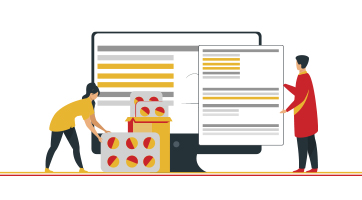
How Natural Language Generation is Transforming the Pharma Industry
Natural Language Generation is transforming the pharma industry by increasing the efficiency of clinical trials, accelerating drug development, improving sales and marketing efforts, and streamlining compliance.
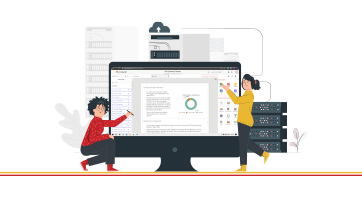
Introducing Phrazor: Everything you Need to Know About This Smart BI Tool
Meet Phrazor, our self-service BI platform that turns complex data into easy-to-understand language narratives.
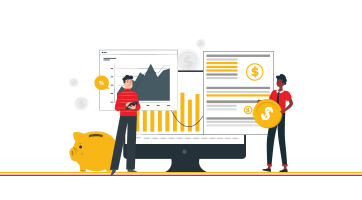
Taking Financial Analysis and Reporting to the Next Level with Natural Language Generation
NLG in finance simplifies data management by automating time-consuming and repetitive workflows and increasing the speed and quality of analytics and reporting.
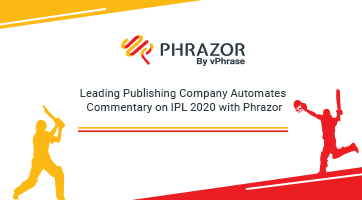
Phrazor Automates Commentary on IPL Matches for a Leading Media & Publishing Company
Phrazor collaborates with Hindustan Times and ventures into a new product use case, wherein it can help publishing companies and journalists in automating written content.
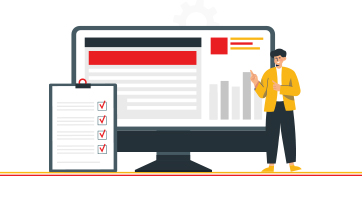
Going beyond Business Intelligence with Augmented Analytics
Explore how business intelligence systems have evolved into augmented analytics, allowing businesses to become smarter and more proactive.
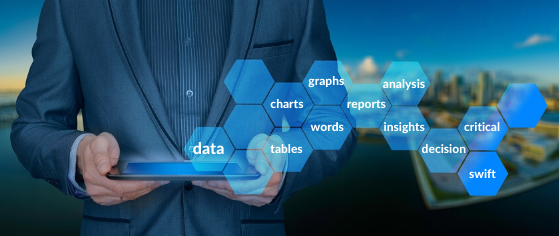
How is Reporting different from Business Intelligence?
Discover the nuances of reporting, business intelligence, and their convergence in business intelligence reporting.
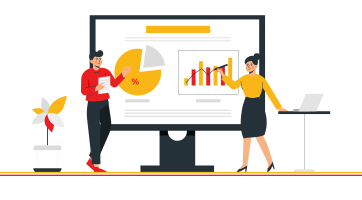
The art of Data-Driven Storytelling - What is it and why does it matter
Learn why data-driven storytelling, and not just data analytics is necessary to drive organizational change and improvement.

How Big Data Analytics aids Media & Entertainment
Discover how big data analytics is helping media companies to maximize their entertainment value and enhance their business performance.
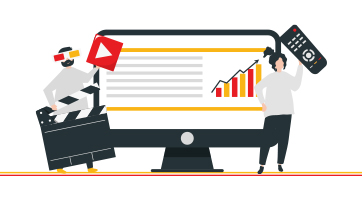
Applications of AI in the media & entertainment industry
From the way creators conceptualize media content to the way consumers consume it, AI is seeping every aspect of the media and entertainment industry.

How Natural Language Generation Is Helping Democratize Business Intelligence
Discover the role of natural language generation in democratizing business intelligence and building a fully data-driven enterprise.

It's time to upgrade your BI with natural language generation
Learn how natural language generation can help organizations extract the maximum value from their business intelligence tools.

How AI can add value to Human Resource Management
Explore the different ways enterprises can use artificially intelligent automation for HR functions.

How AI is Transforming HR Management
See how AI-enabled HR automation is helping enterprises to enhance the end-to-end employee lifecycle.

4 Ways Big Data Analytics is Revolutionizing the Healthcare Industry
Learn how the use of big data is impacting the different aspects of healthcare, from diagnosis and drug discovery to treatment and post-treatment care.

The Role of NLG-based Reporting Automation in the Pharma Industry
Explore the leading present-day use cases of natural language generation-driven reporting automation in the pharmaceutical industry.

Develop a data-literate enterprise with NLG
Learn how Natural Language Generation (NLG) technology can aid in achieving data literacy across your enterprise to enable data-driven decision making.

Data literacy - the skill growing enterprises must watch out for!
Discover why enterprises must understand data literacy and its importance to be prepared for the data-driven future.

Giving Financial Reports a Facelift with Reporting Automation
Discover how financial institutions are leveraging artificial intelligence and machine learning-enabled natural language generation tools to automate their reporting processes.

Automation in Banking and Financial Services: Streamlining the Reporting Process
Explore how the Banking and Financial Services industry is making the most of automated reporting.
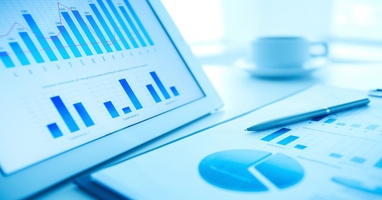
Personalize your Portfolio Analysis Reports for unique Customer Experience
Learn how to capitalize on creating a unique customer experience for your investors with personalized portfolio analysis reports & natural language generation.
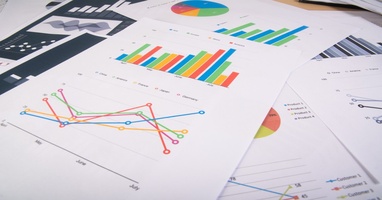
Simplifying Portfolio Analysis Reports using Automation
Here’s how reporting automation is changing the face of portfolio analysis reporting for better customer experience and understandability.
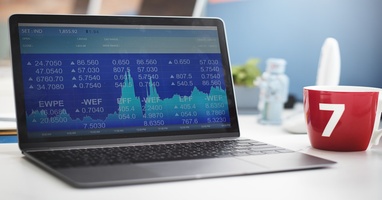
Predictive Analytics: What is it and why it matters!
Here's how organizations are making the most of predictive analytics to discover new opportunities & solve difficult business problems.
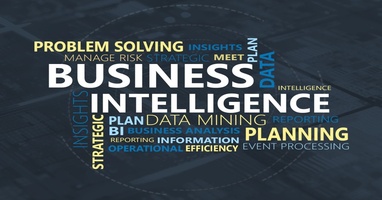
Business Intelligence, the modern way!
Read more to find out the modern approach to Business Intelligence and Reporting
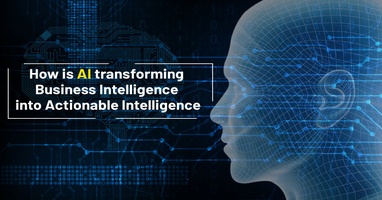
How AI is transforming Business Intelligence into Actionable Intelligence
Check out how advanced AI technology like Natural language generation is transforming BI Dashboards with intelligent narratives.

Data summarization – the way ahead for businesses
Here's how proper summarization and analysis of data can help increase business value and ROI.

NLG modernizing businesses!
Here's how leading businesses are approaching reporting and analytics using advanced artificial intelligence like Natural Language Generation (NLG).
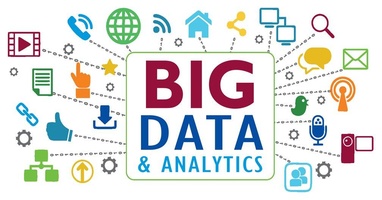
Demystifying Big Data Analytics
Read more to find out how Big Data Analytics can help businesses recalculate risk portfolios, help detect fraudulent behavior, and determine the root causes of failures and defects in near real-time.
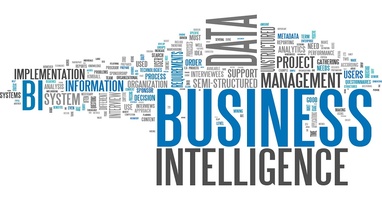
Business Intelligence Decoded
Business intelligence is a data-driven process for analyzing and understanding your business so you can make better decisions based on real-time insights. Here's how it can benefit your teams and organization.

What are Intelligent Narratives and why every business needs them?
Here's how intelligent narratives supplement the graphical elements on dashboards and add more value to the information communicated by giving a quick account of the data, deriving key insights, and aid faster, better decision making.

AI revamping the educational space
Read how AI and machine learning are paving their way in the educational space by overcoming the traditional challenges of the industry.
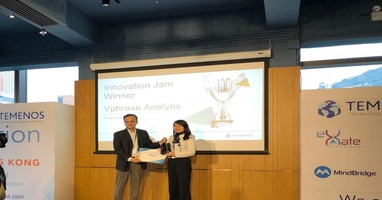
vPhrase emerges as the winner at the Temenos Innovation Jam in Hong Kong
Here's how Phrazor demonstrated its capabilities of auto-generating a full-fledged report in just 5 seconds and won the Temenos Innovation Jam in Hong Kong.

Can software write content for you?
Let's understand how and why website and blog content can be auto-generated using Phrazor

The media and entertainment industry goes gaga over AI
Read along to understand how AI is influencing the media and entertainment industry.
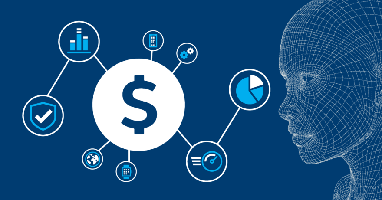
AI to revolutionize the banking sector
Here’s how AI is coming to become the most defining technology for the banking industry.

Business problems that AI can solve
Unleash the potential of AI to overcome business challenges and climb higher up the ladder of success.

NLU vs NLP vs NLG: The Understanding, Processing and Generation of Natural Language Explained
Read along to understand the difference between natural language processing, natural language understanding and natural language generation.

AI is all set to empower medicos
AI is a boon to the healthcare industry. Let us understand how it can help medical professionals do their jobs better.

Top use cases in automated report writing
The power of natural language generation in robotizing report writing should be realized in different fields. Here’s why and how.
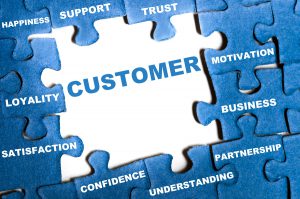
Striking a chord with your customers, the AI way
Here's how AI-backed solutions can help finance companies improve their customer service with language-based portfolio statements.

Will automation lead to mass unemployment?
Will this wave of Artificial Intelligence and Robotics cause mass unemployment or will it in fact create more jobs? Let's find out...

Leveraging Artificial Intelligence to augment Big Data Analysis
Check out how the painstaking tasks of analyzing massive volumes of data and generating reports can be automated for a boost in productivity and revenue.

5 technological breakthroughs that will benefit your business right away
Do more with less with these 5 tech breakthroughs which you can implement in your business right away.

When indecipherable numerical tables turned into personalized investment stories
Natural Language Generation systems help you convert complex portfolio statments in easy to understand investment stories. Read the article to check an example and also how it's done.
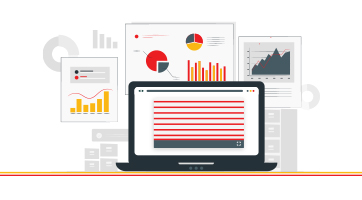
A Quick Guide to Natural Language Generation (NLG)
Natural Language Generation (NLG), an advanced artificial intelligence (AI) technology generates language as an output on the basis of structured data as input.

Artificial Intelligence Decoded
Artificial intelligence (AI) is a field of computer science focused at the development of computers capable of doing things that are normally done by people, things that would generally be considered done by people behaving intelligently.

What is Big Data and how to make sense of it?
Big Data can be described as data which is extremely large for conventional databases to process it. The parameters to gauge data as big data would be its size, speed and the range.

Would you please explain it in human
Phrazor, an augmented analytics tool uses advanced AI technology and machine learning to pull insights from raw data and present them in simple and succinct summaries, augmented by visuals.



